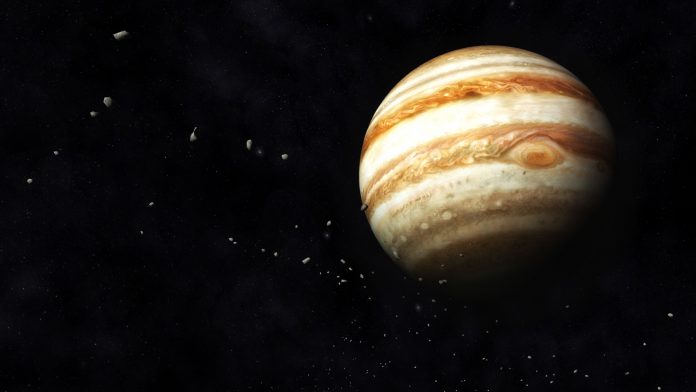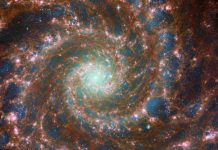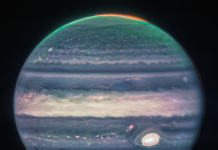The James Webb Space Telescope (JWST), operated by NASA, has made a groundbreaking observation within Jupiter’s atmosphere, unveiling a previously undiscovered phenomenon
This find is a high-speed jet stream that extends over 3,000 miles (4,800 kilometres) in width and is positioned above the primary cloud layers near Jupiter’s equator. This jet stream revelation sheds light on the intricate dynamics of Jupiter’s well-known turbulent atmosphere. It underscores the exceptional capabilities of the Webb telescope in monitoring and studying such atmospheric features.
“What we have always seen as blurred hazes in Jupiter’s atmosphere now appear as crisp features that we can track along with the planet’s fast rotation,” said Ricardo Hueso of the University of the Basque Country in Bilbao, Spain, lead author on the paper describing the findings.
Jupiter’s mysterious jet stream
The research group examined data from NASA’s Webb Telescope’s Near-Infrared Camera (NIRCam), recorded in July 2022. This data analysis was part of the Early Release Science program, co-led by Imke de Pater from the University of California, Berkeley, and Thierry Fouchet from the Observatory of Paris.
The program aimed to capture images of Jupiter at intervals of 10 hours, equivalent to one Jupiter day. These images were taken using four distinct filters, each able to identify alterations in small atmospheric features at various altitudes within Jupiter’s atmosphere.
Despite the differences between Jupiter and Earth – Jupiter is a gas giant and Earth a terrestrial, moderate-climate planet – both celestial bodies possess stratified atmospheres. Previous missions have focused on studying these atmospheres’ lower and deeper layers using various light wavelengths, such as infrared, visible, radio, and ultraviolet, to observe phenomena like massive storms and ammonia ice clouds.
JWST’s unprecedented view
However, the James Webb Space Telescope stands out by delving deeper into the near-infrared spectrum, enabling it to examine the higher-altitude layers of Jupiter’s atmosphere, situated approximately 15-30 miles (25-50 kilometres) above the planet’s cloud cover. In this near-infrared imagery, the upper-level hazes, which typically appear as indistinct blur and exhibit increased luminosity around the equatorial region, now reveal finer details thanks to the capabilities of the Webb telescope.
The recently identified jet stream on Jupiter races at approximately 320 miles per hour (or 515 kilometres per hour), twice the sustained wind speed of a Category 5 hurricane on Earth. This high-speed jet stream is roughly 25 miles (40 kilometres) above Jupiter’s cloud layers within the lower stratosphere.
To assess the variation in wind speed with altitude and establish wind shears, the research team compared the wind patterns observed by the James Webb Space Telescope at higher altitudes to those detected by the Hubble Space Telescope at deeper layers of Jupiter’s atmosphere.
“We knew the different wavelengths of Webb and Hubble would reveal the three-dimensional structure of storm clouds, but we were also able to use the timing of the data to see how rapidly storms develop,” added team member Michael Wong of the University of California, Berkeley, who led the associated Hubble observations.
Jupiter’s atmosphere
The exceptional resolution and wide wavelength coverage of the James Webb Space Telescope were instrumental in identifying and monitoring the small cloud features that served as indicators for tracking the newly discovered jet stream. Additionally, the vital complementary data from the Hubble Space Telescope, acquired one day after the Webb observations, played a crucial role.
These Hubble observations helped establish the fundamental conditions of Jupiter’s equatorial atmosphere and facilitated the observation of convective storms in the planet’s equator unrelated to the jet stream.
The research team wants to conduct further observations of Jupiter using the James Webb Space Telescope to investigate whether the speed and altitude of the jet stream undergo any changes over time.














